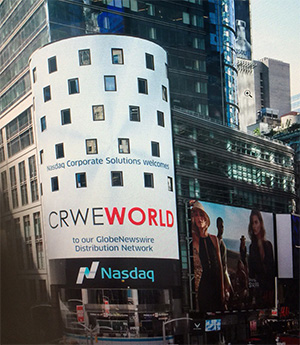Johnson & Johnson's TAR-200 monotherapy demonstrates highest complete response rate with sustained clinical benefits in patients with certain types of bladder cancer
Johnson & Johnson's TAR-200 monotherapy demonstrates highest complete response rate with sustained clinical benefits in patients with certain types of bladder cancer |
| [26-April-2025] |
Phase 2b SunRISe-1 study shows more than 82 percent of patients achieved complete response (CR) with more than half of responders remaining cancer-free at one year after CR Results reinforce potential of TAR-200 to transform outcomes for certain types of BCG-unresponsive, high-risk non-muscle invasive bladder cancer LAS VEGAS, April 26, 2025 /PRNewswire/ -- Johnson & Johnson (NYSE: JNJ) today announced new data from Cohort 2 of the pivotal Phase 2b SunRISe-1 study evaluating TAR-200—an intravesical gemcitabine releasing system—for patients with certain types of bladder cancer. The findings demonstrate the highest complete response rate without reinduction with more than half of responders remaining cancer-free for at least 12 months. These results highlight the potential of TAR-200 as a breakthrough for people with Bacillus Calmette-Guérin (BCG)-unresponsive, high-risk non-muscle-invasive bladder cancer (HR-NMIBC) with carcinoma in situ (CIS), with or without papillary tumors who are ineligible or refuse radical cystectomy (RC). These results were featured in the Paradigm-Shifting, Practice-Changing Clinical Trials in Urology plenary session at the 2025 American Urological Association (AUA) Annual Meeting.1 "Treatment with TAR-200 has long-lasting effectiveness. More than 82 percent of patients achieved a complete response, and of those that initially responded to treatment, more than half showed no signs of cancer at one year," said Joseph Jacob*, M.D., MCR, Associate Professor of Urology at Upstate Medical University and presenting author. "These findings represent the highest complete response rate observed for patients with HR-NMIBC and underscore the potential of TAR-200 to provide long-lasting cancer control for patients." "Bladder cancer is one of the ten most common cancers worldwide, yet treatment options have remained largely unchanged for over 40 years, leaving patients with few choices if initial BCG therapy does not work," said Christopher Cutie, M.D., Vice President, Disease Area Leader, Bladder Cancer, Johnson & Johnson Innovative Medicine. "TAR-200 is designed to allow for sustained delivery of medication directly into the bladder through a brief and routine procedure, which benefits patients. These data now show patients can remain cancer-free for a meaningful period of time, marking a significant step forward for those facing this challenging disease." As of March 2025, 82.4 percent of the 85 enrolled patients in the study achieved a complete response (CR) (95 percent confidence interval [CI], 72.6-89.8), meaning their cancer was undetectable following treatment. This high response rate translated into sustained disease control, with 52.9 percent of responders maintaining complete response at one year. The median duration of response (DOR) was 25.8 months (95 percent CI, 8.3-not estimable), indicating that many patients remained cancer-free for over two years without the need for reinduction therapy. At 12 months, 86.6 percent (95 percent CI, 76.6-92.6) of responders remained cystectomy-free. Importantly, the treatment was well-tolerated, with most adverse events being mild urinary symptoms. These findings show that TAR-200 offers a highly effective and durable treatment option for patients with certain types of BCG-unresponsive HR-NMIBC. Most treatment-related adverse events (TRAEs) were mild and manageable. Overall, 71 patients (83.5 percent) experienced TRAEs, the majority of which were low-grade urinary symptoms, such as bladder irritation or discomfort. Eleven patients (12.9 percent) experienced Grade 3 or higher TRAEs, and five patients (5.9 percent) reported serious TRAEs. Only three patients (3.5 percent) discontinued treatment due to TRAEs, and there were no treatment-related deaths. TAR-200 is inserted directly into the bladder by a healthcare professional in a brief outpatient procedure, without the need for anesthesia. Designed to remain in the bladder, it does not interfere with daily activities and provides sustained release of treatment throughout the day. To date, TAR-200 has been placed more than 10,000 times as part of the SunRISe clinical program. Earlier results from Cohort 2 were previously presented at the 2024 European Society of Medical Oncology (ESMO) Congress and at the 2024 American Urological Association (AUA) Annual Meeting. In January 2025, Johnson & Johnson announced the initiation of a new drug application with the FDA for TAR-200 under the Real-Time Oncology Review (RTOR) program. ____________________ About TAR-200 About SunRISe-1, Cohort 2 About High-Risk Non-Muscle-Invasive Bladder Cancer About Johnson & Johnson Cautions Concerning Forward-Looking Statements This press release contains "forward-looking statements" as defined in the Private Securities Litigation Reform Act of 1995 regarding product development and the potential benefits and treatment impact of TAR-200. The reader is cautioned not to rely on these forward-looking statements. These statements are based on current expectations of future events. If underlying assumptions prove inaccurate or known or unknown risks or uncertainties materialize, actual results could vary materially from the expectations and projections of Janssen-Cilag International NV, Janssen Research & Development, LLC, Janssen Biotech, Inc., Janssen Global Services, LLC, Janssen-Cilag, S.A., Janssen Scientific Affairs, LLC and/or Johnson & Johnson. Risks and uncertainties include, but are not limited to: challenges and uncertainties inherent in product research and development, including the uncertainty of clinical success and of obtaining regulatory approvals; uncertainty of commercial success; manufacturing difficulties and delays; competition, including technological advances, new products and patents attained by competitors; challenges to patents; product efficacy or safety concerns resulting in product recalls or regulatory action; changes in behavior and spending patterns of purchasers of health care products and services; changes to applicable laws and regulations, including global health care reforms; and trends toward health care cost containment. A further list and descriptions of these risks, uncertainties and other factors can be found in Johnson & Johnson's most recent Annual Report on Form 10-K, including in the sections captioned "Cautionary Note Regarding Forward-Looking Statements" and "Item 1A. Risk Factors," and in Johnson & Johnson's subsequent Quarterly Reports on Form 10-Q and other filings with the Securities and Exchange Commission. Copies of these filings are available online at http://www.sec.gov, http://www.jnj.com, or on request fromJohnson & Johnson. None of Janssen-Cilag International NV, Janssen Research & Development, LLC, Janssen Biotech, Inc., Janssen Global Services, LLC, Janssen-Cilag, S.A., Janssen Scientific Affairs, LLC nor Johnson & Johnson undertakes to update any forward-looking statement as a result of new information or future events or developments. *Dr. Jacob has provided consulting, advisory, and speaking services to Johnson & Johnson; he has not been paid for any media work.
SOURCE Johnson & Johnson | ||||||||||||||||||||||||||||||||||||||||||||||||||||||||||||||||||||||||||||||||||||||||||||||||||||||||||||||||||||||
Company Codes: NYSE:JNJ | ||||||||||||||||||||||||||||||||||||||||||||||||||||||||||||||||||||||||||||||||||||||||||||||||||||||||||||||||||||||




















